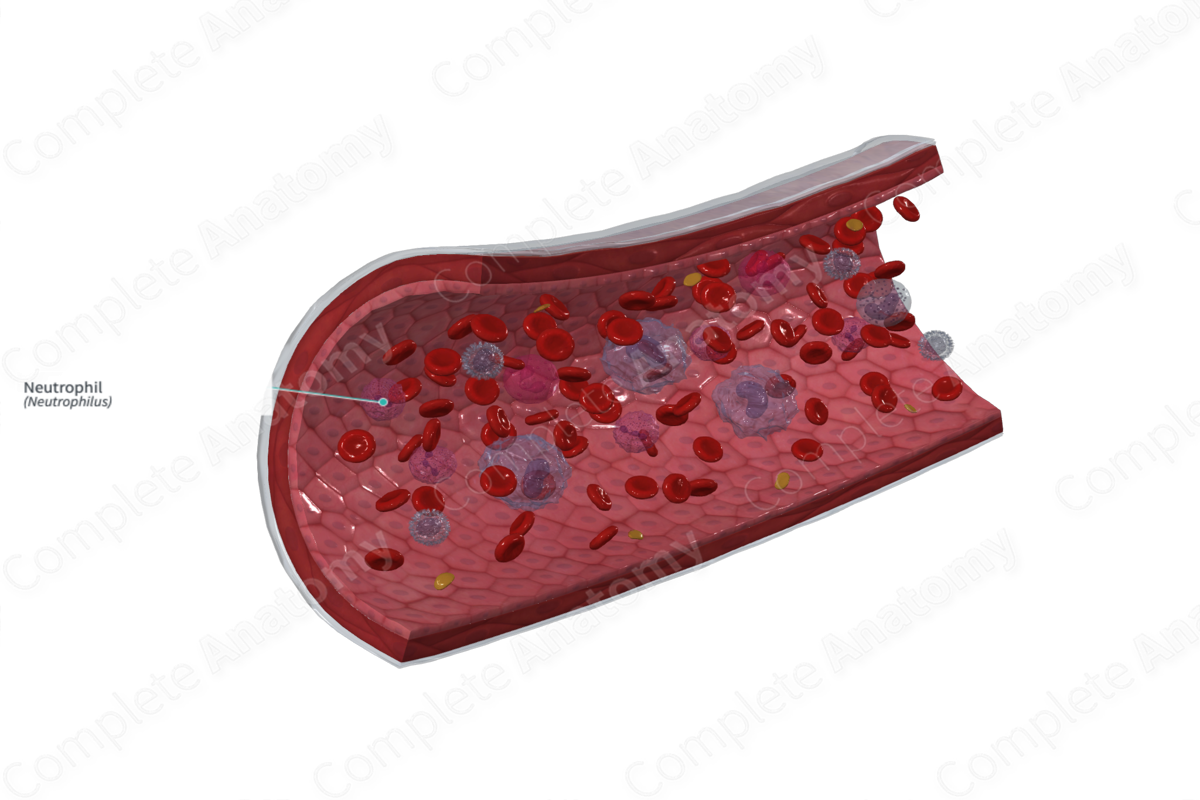
Quick Facts
A neutrophil is a mature granular leukocyte that is polymorphonuclear (its nucleus having three to five lobes connected by slender threads of chromatin, and cytoplasm containing fine granules); neutrophils have the properties of chemotaxis, adherence to immune complexes, and phagocytosis (Dorland, 2011).
Related parts of the anatomy
Cell Morphology
Neutrophils are the most abundant leukocytes, accounting for around 60% of all leukocytes (Eroschenko, 2008). There are around 3000–7000 neutrophils per microliter of blood. They are motile cells and have a diameter of 10–14 μm, making them larger than erythrocytes.
Neutrophils have a multilobed nucleus that may have a horseshoe shape. The lobes of the nucleus range from 2 to 6 lobes that are interconnected by thin threads of chromatin. Immature neutrophils contain fewer lobes (Pawlina, 2016).
Neutrophils contain three kinds of cytoplasmic granules and therefore are classified as granulocytes. These granules contain enzymes and molecules that are involved in immune responses. They also possess various surface receptors which allow them to recognize infectious agents. Neutrophils have a small Golgi apparatus and small number of mitochondria.
The lifespan of neutrophils ranges from 6 hours to a few days. When a neutrophil reaches its maximum lifespan, it’s destroyed via apoptosis and is engulfed by a macrophage (Marieb, Wilhelm and Mallatt, 2012).
Production
In the red bone marrow, a hematopoietic stem cell differentiates into a myeloid stem cell which gives rise to neutrophils. Development of neutrophils takes 7–11 days (Marieb, Wilhelm and Mallatt, 2012). Neutrophils leave the blood and enter peripheral connective tissues. They are usually located at sites of infection.
Function
Neutrophils provide the first line of defense during an inflammatory response. As granulocytes, neutrophils phagocytose bacteria and destroy them by releasing digestive enzymes from their cytoplasmic granules that target the cell walls of bacteria. Other types of granules released by neutrophils mediate and enhance immune responses (Pawlina, 2016). The phagocytic function of neutrophils is driven by chemotactic factors (Eroschenko, 2008).
List of Clinical Correlates
—Neutropenia
—Neutrophilia
References
Dorland, W. (2011) Dorland's Illustrated Medical Dictionary. 32nd edn. Philadelphia, USA: Elsevier Saunders.
Eroschenko, V. P. (2008) DiFiore's Atlas of Histology with Functional Correlations. Wolters Kluwer Health/Lippincott Williams & Wilkins.
Marieb, E. N., Wilhelm, P. B. and Mallatt, J. (2012) Human Anatomy. 14th edn.: Benjamin Cummings.
Pawlina, W. 2016. Histology: A text and atlas with correlated cell and molecular biology. 7th ed. Philadelphia: Wolters Kluwer.

